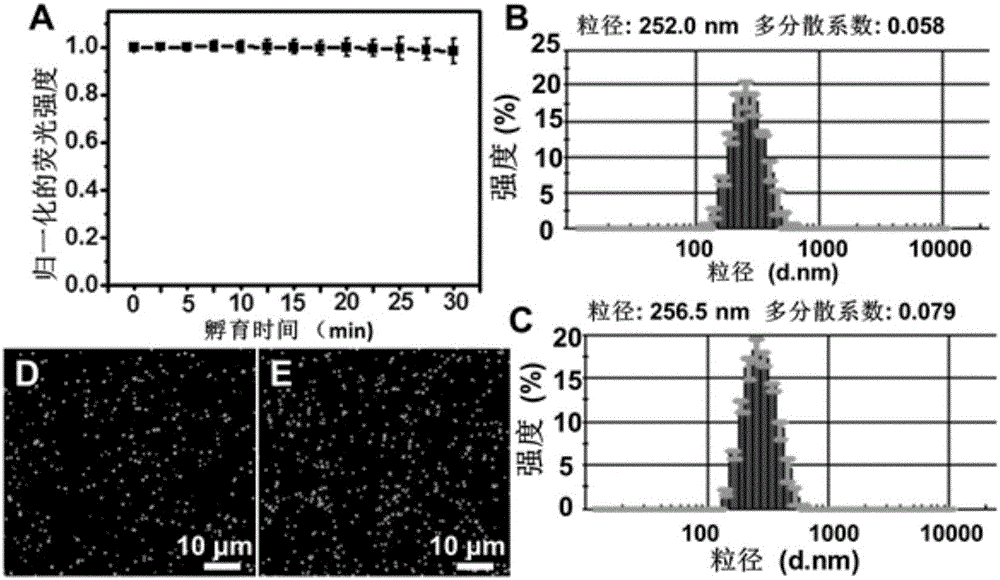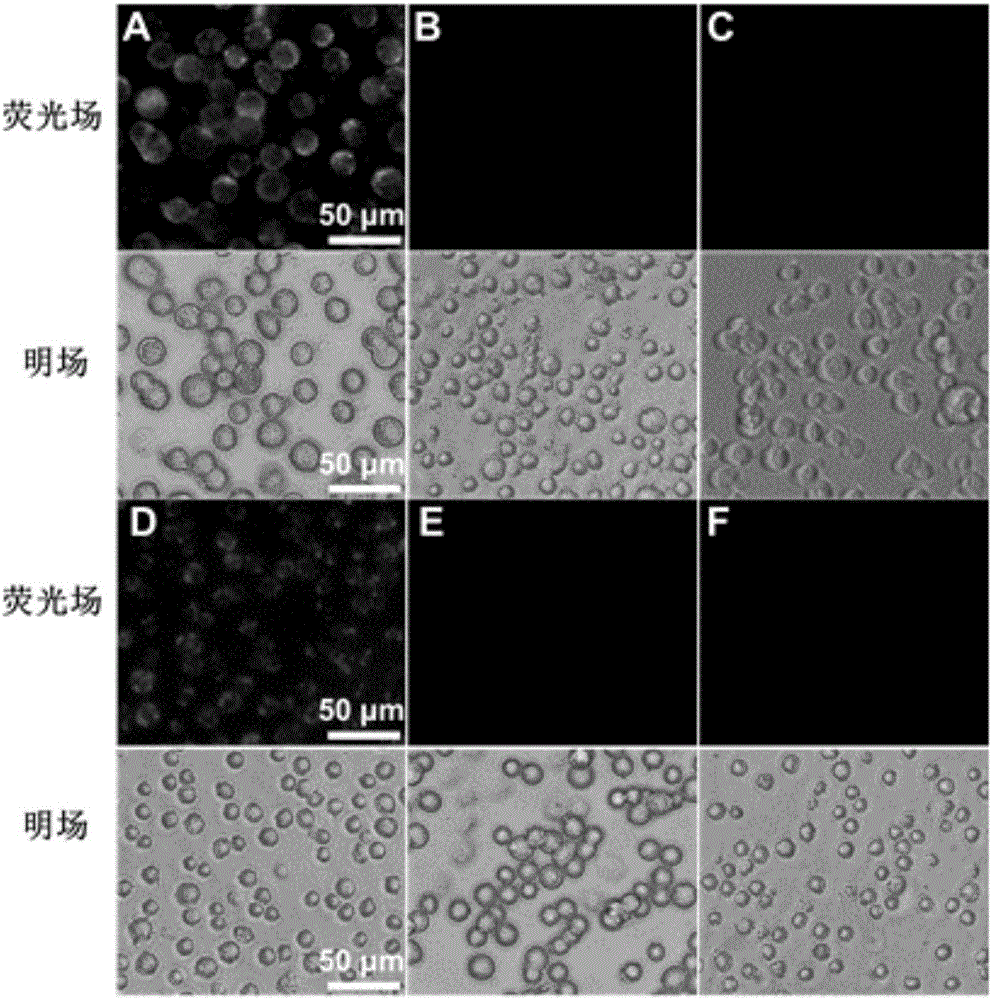Method for synchronously capturing and identifying circulating tumor cells
A tumor cell and leukocyte technology, which is applied in the field of simultaneous capture and identification of circulating tumor cells by nanomaterials, can solve the problems of CTCs loss, time-consuming, and many operation steps, and achieves the avoidance of CTCs loss, simple and time-saving operation, and light stability. Excellent effect
- Summary
- Abstract
- Description
- Claims
- Application Information
AI Technical Summary
Problems solved by technology
Method used
Image
Examples
Embodiment 1
[0040] [Example 1] Preparation of immunomagnetic ball and immunofluorescent ball
[0041] The preparation of magnetic nanospheres (MNs) adopts the layer-by-layer assembly method developed in our laboratory. First, EDC / NHS is used to activate the carboxyl groups on the surface of the styrene acrylamide polymer spheres (Pst-AAm-COOH), and the polyethylene imine (PEI) ) Is covalently bonded to the amino group; then use γ-Fe 2 O 3 The coordination of Fe and the primary amine of PEI will transform γ-Fe 2 O 3 Assemble to the surface of the polymer ball; then repeat the assembly of PEI and γ-Fe 2 O 3 Until 5 layers of γ-Fe are assembled 2 O 3 Afterwards, the obtained magnetic nanospheres are treated with tetraethoxysiloxane and (3-aminopropyl)triethoxysiloxane to coat a layer of silicon shell on the surface and introduce amino groups; finally, the last step is obtained The magnetic nanospheres are treated with succinic anhydride to introduce carboxyl groups on their surface. The obtaine...
Embodiment 2
[0044] [Example 2] Investigation on the stability of fluorescent ball in complex system
[0045] Incubate FNs with 1mL pure fetal bovine serum (FBS), and monitor the changes in fluorescence intensity for 30 minutes with a fluorometer; use dynamic light scattering to measure the particle size and monodispersity changes of FNs before and after incubation; prepare samples of FNs before and after incubation Observe under an inverted fluorescence microscope.
[0046] Such as figure 1 As shown in A, the fluorescence intensity of FNs did not change significantly within 30 minutes of incubation in pure FBS; the hydrated particle size and polydispersity coefficient (PDI) after incubation were compared with those before incubation ( figure 1 B, C), almost no significant increase, indicating that FNs can still maintain excellent monodispersity in a complex system; and the results of fluorescence microscopy once again indicate that FNs are incubated in pure FBS for 30 minutes ( figure 1 D) The ...
Embodiment 3
[0047] [Example 3] Immunofluorescence ball efficiently and specifically label target cells
[0048] Incubate the green fluorescent spheres coupled with EpCAM antibody (i.e. immuno-green fluorescent spheres, IGNs) with target tumor cells MCF-7 for 30 minutes, centrifuge at 1500 rpm for 5 minutes to remove excess fluorescent spheres, and observe under an inverted fluorescent microscope; at the same time, IGNs and leukemia Cells were incubated with Jurkat T cells, and naked GNs without antibody conjugate were incubated with MCF-7 cells as a control experiment. Similarly, the red fluorescent balls coupled with CD45 antibody (ie, immunored fluorescent balls, IRNs) reacted with target cells Jurkat T cells, while IRNs were incubated with MCF-7 and RNs labeled Jurkat T cells as a control experiment. In order to compare the labeling effect of IFNs with organic dyes, Jurkat T cells were incubated with CD45 monoclonal antibody for 30 minutes and then reacted with Cy3 labeled secondary antib...
PUM
| Property | Measurement | Unit |
|---|---|---|
| Diameter | aaaaa | aaaaa |
| Particle size | aaaaa | aaaaa |
Abstract
Description
Claims
Application Information
 Login to View More
Login to View More - R&D
- Intellectual Property
- Life Sciences
- Materials
- Tech Scout
- Unparalleled Data Quality
- Higher Quality Content
- 60% Fewer Hallucinations
Browse by: Latest US Patents, China's latest patents, Technical Efficacy Thesaurus, Application Domain, Technology Topic, Popular Technical Reports.
© 2025 PatSnap. All rights reserved.Legal|Privacy policy|Modern Slavery Act Transparency Statement|Sitemap|About US| Contact US: help@patsnap.com



